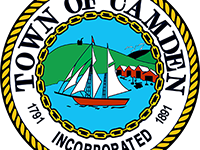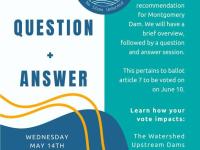Maine education, health commissioners urge fall sports be delayed further
AUGUSTA — Leaders of the Maine Department of Education and the Maine Department of Health and Human Services raised concerns about the fall sports season Tuesday, Sept. 1 to the leaders of the Maine Principal’s Association, the state’s governing body for high school sports.
“Our review found that several elements in the MPA Guidance do not comport with the State of Maine rules,” a joint letter from Maine Department of Health and Human Services Commissioner Jeanne Lambrew and Maine Department of Education Commissioner Pender Makin stated.
The MPA currently plans to allow teams to begin practicing Sept. 8, though the DOE and DHHS leaders urge the MPA to delay the start of practices, and games, even later.
“[W]e urge you to consider extending your delayed start date for fall sports as many other interscholastic sports bodies in other states have done to allow for sufficient time to resolve the concerns expressed in this letter and to allow for appropriate time for implementation, the letter states. “This would also have the beneficial effect of allowing schools the opportunity to get their academic programs underway, which many school administrators, teachers and communities will likely appreciate.”
Full letter from Commissioners Lambrew and Makin:
Dear Mr. Burnham,
Thank you for asking the Administration on August 27, 2020 to review the Maine Principals’ Association’s (MPA) “Return to Competition for Competitive Athletics and Activities in Maine” (hereafter referred to as “MPA Guidance”). We consider it the role of the Administration to promote understanding of and compliance with public health-related measures and requirements. This includes responding to the request to support the decision-making process of the MPA.
On August 13, the MPA inquired as to whether it should consider the Maine Department of Education’s Framework for Returning to Classroom Instruction’s Pre-K-12 and Adult Education Public Health Guidance for physical education courses or the Department of Economic and Community Development’s COVID-19 Prevention Checklist for Community Sports when developing its own guidance document. We responded in a letter on August 19 that it would be most appropriate for MPA to consider the “Community Sports” Checklist, even though it was developed for a different context.
To that same end, on Thursday, August 27, 2020, MPA shared its guidance in its entirety only hours before its Interscholastic Management Committee was scheduled to vote on the guidance, leaving us inadequate time to review and provide appropriate feedback in advance of the vote. You acknowledged at the time your interest in feedback nonetheless and your intent to align this guidance with State guidance.
The purpose of this letter is to describe areas where MPA Guidance does not comport with underlying public health policy related to COVID-19 and to highlight recommendations from other guidance documents that we urge the MPA to adopt.
Before doing so, we want to acknowledge the challenging impact that public health safety during the coronavirus pandemic has had on school sports. We understand that being active in sports has both physical and mental health benefits for youth and the opportunity to re-engage in sports can boost the overall wellbeing of young people during times that have been particularly stressful and, in many cases, isolating. It is important to note that the State’s guidance related to physical activity does not indicate that sports must be canceled outright; rather, it has offered safe ways for participation. If the schools had the resources like professional and some collegiate sports leagues to conduct frequent team testing and house teams separately to protect other students, school staff, and their families, it might be possible to return to interscholastic competition safely. Without that, such a return poses a risk of spreading COVID-19 across the state, within schools, and to vulnerable people within communities.
Relationship to State Executive Orders and Non-Sports Guidance
For background, as of September 1, 2020, the United States of America remains under a Federally declared public health emergency and the State of Maine remains under a state of civil emergency.
Governor Mills has been able to permit the re-opening of most of Maine’s economy to date by allowing re-opening as a condition of following public health guidance. Through Executive Order 49 FY 19/20, the Commissioner of the Department of Economic and Community Development (DECD) was charged with the implementation of Together We Are Maine: Restarting Maine's Economy Plan designed to identify businesses and activities where current restrictions could be adjusted to safely allow for more economic and personal activity. This has resulted in the COVID19 Prevention Checklists and related agency guidance to assist a variety of businesses and organizations in safely resuming various activities.
Our review found that several elements in the MPA Guidance do not comport with the State of Maine rules. The MPA Guidance states that spectators at events should be 3-6 feet apart. However, fewer than 6 feet spacing is prohibited for spectators in the guidance for Community Sports, Performing Arts Venues, Movie Theaters, and related guidance. For instance, the Movie Theater guidance specifies that, “In seated venues, limit seating to allow for at least six feet of physical distance between non-household members.” Similar guidance applies to related planned spaces off the field or court. Additionally, the outdoor gathering limit remains at 100 while the indoor limit
is 50 people, including participants, officials, and spectators, and is lower if 6-foot distancing cannot be maintained between individuals and groups like families. High traffic areas including entrances, exits and restrooms should be managed per standard guidelines.
The Department of Education Framework for Pre-K through 12 schools makes an exception to the 6-foot distance rule for children (not adults) in classrooms and bus transportation. The allowance is applied exclusively to required activities necessary for in-school participation and in which all the individuals involved are masked, sedentary, and in a controlled, clean environment. However, this allowance does not apply in cafeterias or gyms for physical education classes, for example. As such, the classroom and bus exception does not follow students to sports. Student athletes as well as adults should maintain 6 feet distance when not actively engaged in sports.
The MPA face covering guidance is largely but not fully consistent with State guidance. According to Executive Order 49 FY 19/20, “individuals must wear cloth face coverings in public settings where other physical distancing measures are difficult to maintain.” Beyond exceptions for young children and certain people with medical conditions, face coverings are not required during vigorous activity. However, at all other times including during low to moderate intensity exercises, in bench areas, during coaching strategy sessions, and other circumstances where physical distancing measures are difficult to maintain, sports participants must wear a face covering – along with coaches, officials, and others involved in school sports.
The MPA Guidance also states that parents must “notify” the school if a student athlete has been a close contact of a person confirmed positive for COVID-19. Last Friday, the Maine Department of Education posted the draft standard operating procedure for COVID-19 in schools. Beyond notification of schools, it calls for isolation of anyone testing positive for COVID-19 and quarantine for close contacts. We expect to finalize this standard operating procedure in the near future.
Relationship to School Guidance
The MPA Guidance is designed specifically for sports in schools. However, it does not explicitly reference either the Maine Department of Education requirements and recommendations for schools or school district plans for reopening. The Department of Education in partnership with the Department of Health and Human Services issued basic requirements for schools and recommendations for implementation six weeks ago. School administrative units, faculty, parents, students, and other stakeholders have developed district-related plans for the fall based on these requirements. We view these plans as the rules for what takes place in public schools – in the classroom or in gyms, fields, buses, and other school property. The MPA Guidance is silent on the interaction with schools’ plans, despite these activities occurring on school grounds, using school services, and supervised by school staff.
Relationship to the Community Sports Guidance
We appreciate that the MPA Guidance adopts much of the language in the “COVID19 Prevention Checklist Industry Guidance: Community Sports, Last Updated: Jul 16 2020.” However, the MPA Guidance does not include any modifications to the types of play for sports based on risk. Under the MPA Guidance, student athletes in even the highest risk sports can compete as they did preCOVID, including within-team competition, between local teams, between teams statewide regardless of the color classification of counties in the School Health Advisory System, and between teams from out of state including states that are not exempt from Maine’s requirement for quarantine or testing. The Community Sports Guidance document does not permit competitions outside of scrimmages within the team for high-risk sports. The combination of travel and close contact in certain sports increases the risk of accelerating coronavirus spread. This is why colleges and universities in New England have largely cancelled intercollegiate athletic competition this fall.
The State waited to update its Community Sports Guidance to see if the final MPA Guidance could be adopted for that related set of activities (e.g., travel teams, club sports, private sports leagues). However, our public health experts do not recommend adopting the MPA Guidance given the differences previously described. As such, they updated the Community Sports Guidance effective September 1, 2020 (attached). For reference, the updates include (1) clarification on appropriate use of face coverings in sports; (2) additional reclassification of the risk of sports; (3) clarification on levels of play and what local competition means; and (4) new guidance on road races. It also clarifies that when interstate travel restarts, teams follow the State’s travel policy.
Next Steps
We appreciate the opportunity to submit our views on the MPA Guidance issued on August 27. We value your statement that this is a working document and that you welcome any feedback or recommendations. As detailed in this letter, we have a number of concerns about the MPA guidance as it currently stands. Here are links to the letters from Maine School Boards Association’s Board of Directors and the Maine School Superintendents Association Executive Committee that also raise concerns. We would like to know, at your earliest convenience, if the MPA plans on modifying its guidance and, if so, how? Additionally, given that it is September 1, we urge you to consider extending your delayed start date for fall sports as many other interscholastic sports bodies in other states have done to allow for sufficient time to resolve the concerns expressed in this letter and to allow for appropriate time for implementation. This would also have the beneficial effect of allowing schools the opportunity to get their academic programs underway, which many school administrators, teachers and communities will likely appreciate.
Thank you for your consideration.
Sincerely,
Jeanne Lambrew, Commissioner, Department of Health and Human Services
Pender Makin, Commissioner, Department of Education
Event Date
Address
United States


























